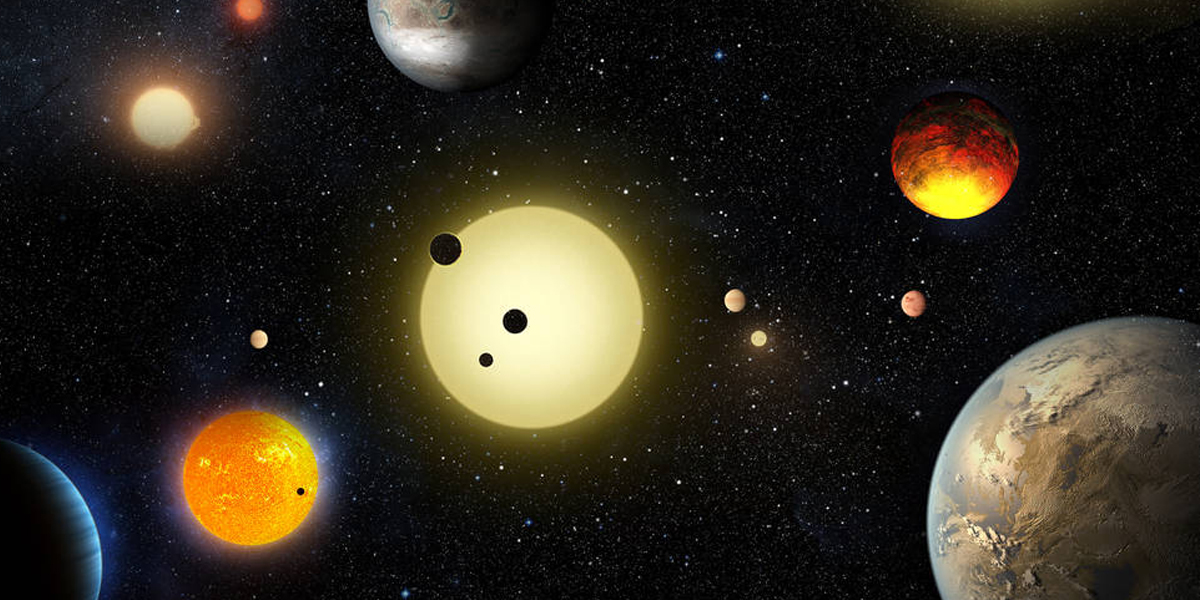
- This event has passed.
Family Astronomy Night, Wednesday, May 5, 2021 at 7 PM EST – VIRTUAL EVENT
May 5, 2021 @ 7:00 pm - 8:30 pm EDT
Free
Please check back soon for a recording of this presentation!
Exoplanets: Other Worlds Beyond Our Solar System
People have known about planets since ancient times. But all of those planets orbit our sun. What about all the other stars? Astronomers have been hoping to find planets around them—exoplanets—for centuries. Yet did you know that not a single exoplanet was found to orbit another star until 1995? And that this discovery was worth a Nobel Prize? Are you aware that thousands of exoplanets have been found since then, with 80% of those having been found only in the last 8 years? How is all this possible? Have you heard about the satellite missions that were specifically designed to find exoplanets? Were they successful? Also, do you know what the stars, constellations, and planets are doing in May? Are you ready for a special opportunity this month to see all five unaided-eye planets (Mercury, Venus, Mars, Jupiter, and Saturn) in a single night? Join me by Zoom to learn more!
Please register to receive the Zoom login. You may register up to the presentation start time or even during the meeting to join us.
https://msu.zoom.us/webinar/register/WN_UAVhiGPfTZOGfx0n1Oj6dA

Space Telescope Delivers the Goods: 2,200 Possible Planets. Illustration credit: https://exoplanets.nasa.gov/news/1677/space-telescope-delivers-the-goods-2200-possible-planets/
Adults and families with school-age and older children are invited to join us virtually for a presentation focused on exoplanets. We will describe the many ways that astronomers have tried to detect exoplanets, the advantages and disadvantages of each, and how successful each method has been. This will include a discussion what kinds of exoplanets are easy to find, and how our discoveries reflect those tendencies. We will offer some evidence for why astronomers think that exoplanets might be extremely common, even more common than stars, despite that so few are known compared to the billions and billions of stars we can see. We will describe the space missions that have been sent out to detect exoplanets. Finally, we will finish with a brief update on the Perseverance rover and the Ingenuity helicopter.
And, as always, we will show you how to find the planets and other cool things that are in the sky this month and into early June. Are you able to find the Big Dipper? More importantly, can you use the Big Dipper to find other stars and constellations, like Polaris (the north star), Arcturus in Boötes, and Spica in Virgo? Will you catch a glimpse of the “Winter Hexagon” and all its parts (like Orion, Gemini, and Sirius, the brightest star in the sky) before it sinks into the west? Have you seen Mars in the evening, or Jupiter and Saturn low in the pre-dawn sky? Are you ready for Mercury and Venus to re-appear? Do you know about the meteor shower that is happening right now? We will help you see all of these things for yourself.
Please join our mailing list to receive notices about upcoming Astronomy Night presentations and other events at MSU St. Andrews.
Attention students: MSU St. Andrews participates in the Great Lakes Bay Region STEM Passport program. You may attend an event or workshop and log it as a STEM experience on your passport!
Image credit (illustration): https://www.nasa.gov/press-release/nasas-kepler-mission-announces-largest-collection-of-planets-ever-discovered
Michigan State University is committed to providing equal opportunity for participation in all programs, services, and activities. Accommodation for persons with disabilities may be requested by contacting (517) 432-4499 by Wednesday, April 28, 2021. Requests received after this date will be honored whenever possible.


